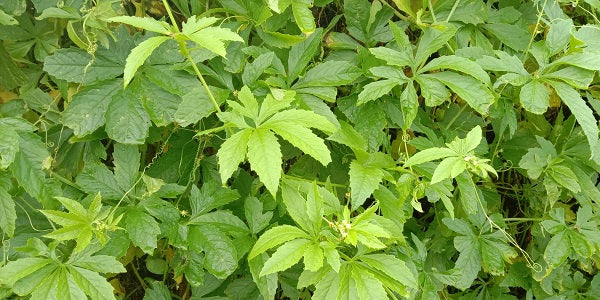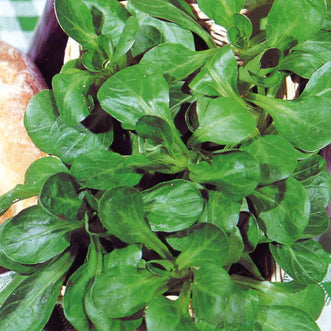
Unusual Vegetable Vines from around the World
Tyler Martin Caigua, pronounced Kai-wa, is an annual vine from South America.
Hyacinth Bean Vine, originally from Africa, is commonly known as the Lablab Bean.
Malabar Spinach is a rapidly growing tropical vine grown extensively throughout Asia.
Caigua, Cyclanthera pedata, also known as Achocha, Slipper Gourd and Lady’s Slipper, is grown from below the snow line right through the tropics and coastal regions for its small edible fruit, mainly used as a vegetable. As a vigorous, lightweight climbing vine, train it up fences or frames with tendrils securing its upward climb. Although, it's equally happy to sprawl across the ground in a carpet like manner over the late summer and autumn months. From a distance, the serrated light green leaves look vaguely like a cannabis leaf, but up close that similarity ends, nor do they possess any narcotic properties.

When the vine is reaching a mature stage, small gherkin-like fruit can be found under the leaf canopy in prolific numbers. These are best harvested at an immature stage before the internal pith separates from the skin and the seeds turn dark brown and woody. The young fruit have a pleasantly mild taste somewhat like cucumber or even asparagus, with a crunchy texture and very little fibre. They can be steamed lightly to maintain their crispness and colour, pickled or maybe even included in Kim-chi. The leaves and flowers are also edible, used in fresh green salads or lightly steamed with a hint of lemon juice at the end. The plant itself seems to have very few pest and disease problems, happily growing in a range of soil types. Experience tells me though that too much nitrogen results in excessive leaf growth and fewer flowers setting fruit.

Medicinally, it's traditionally taken to reduce blood cholesterol and high blood pressure and is said to aid in reducing blood sugars. In the garden, break a pod open and rub the inner juicy pulp over dried, cracked, tired skin for a refreshing odour free non-residual soothing treatment much like cucumber offers.
The Hyacinth Bean Vine, Dolichos lablab, is a fast-growing annual vine originally from Africa that’s a valuable food source in many societies. As well as having stunning flowers of either white or purple, all parts of this amazing plant are edible, from the roots to the leaves and stems right through to the flowers and immature pods that form afterwards.

Roots, immature stems and leaves can be eaten raw or included in casseroles, while the beautiful edible flowers brighten up platters as a garnish. The young flat bean pods can be used like a snow pea in stir fries and other Asian cuisine. While the mature beans are high in protein and minerals, like any other dried bean they are best boiled first in water that’s discarded to remove any toxins. The vine can grow to 4 metres in length and is well suited to covering pergolas, trellis and archways where the flowers and later on the edible pods can hang freely and are easier to harvest.

Malabar Spinach, Basella alba and Basella rubra, is another rapidly growing edible tropical vine grown extensively throughout Asia. While it's perennial by nature in warmer climates, it's not frost hardy, so is best treated as a summer grown annual here in New Zealand. Growing it as a container plant in a sheltered position might extend its season into the cooler months and give you a convenient source of greens.

The large glossy succulent leaves as well as being very ornamental have a mild subtle flavour of pepper and citrus and are rich in vitamins A and C. Despite its name, it's not actually a spinach but can be used in similar ways both as a raw leaf, steamed or boiled. Cooking the leaf can release a gel-like substance, which makes it an ideal ingredient to thicken soups and stews, much like adding Okra. If you don’t want the gel and want the leaf just as a cooked green, simply give it a final rinse under hot water to remove this.

















































